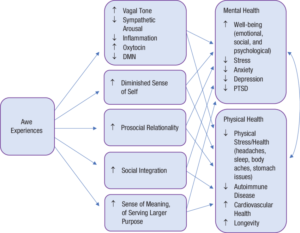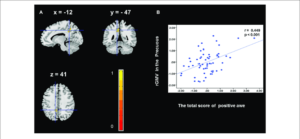The Science of Awe
Awe, often described as an intense emotional response to experiences that transcend one’s perceived understanding of the world around them has intrigued scholars throughout history. Defined by a deep sense of wonder and amazement, awe has captivated the curiosity of scholars, scientists, and thinkers across history. The scientific community today is working toward unraveling the complexities of awe, seeking to decipher the cognitive and physiological mechanisms underlying this mesmerizing experience.
Psychological Dimensions of Awe
A profound change in cognitive processing is triggered by awe, causing a fundamental change in one’s perception. Examples of awe-inspiring stimuli include the wonders of nature and human accomplishments, which cause the brain to realign. Research consistently shows that astonishment opens up cognitive limits and opens people to new ideas. Awe simultaneously expands and challenges traditional knowledge, causing a reassessment of long-standing cognitive frameworks.
Simultaneously, the emotional terrain of wonder exposes a dynamic interaction between curiosity, adoration, and dread. These feelings go beyond the here and now; they have a lasting impact on how someone feels about ordinary situations. Examining awe’s therapeutic possibilities highlights how important it is for regulating one’s emotions. A complicated interaction between thought and feeling is revealed when the psychological aspects of awe are dissected, exposing the many facets of this fascinating phenomenon.
Figure 1

Benefits of Awe
Source: ResearchGate
Physiological and Neurological Basis of Awe
The complex neurobiological foundations of awe are revealed through investigation of its physiological and neurological aspects. By applying cutting-edge neuroimaging methods, scientists have discovered brain regions that are associated with awe-inducing experiences. These regions include the insula, amygdala, and prefrontal cortex. These brain regions control emotional reactions and subtle aspects of perception, providing important information on the mechanical underpinnings of awe. Concurrently, autonomic reactions during astonishment, which appear as changes in skin conductance, hormone regulation, and heart rate, offer a physiological perspective. The combination of these physiological occurrences suggests an adaptive role for wonder in the human experience landscape and provides insights into possible evolutionary antecedents of awe.
Continuing this investigation into the chemical realm, awe triggers a series of neurochemical reactions. Awe-inspiring events alter neurotransmitters including dopamine, oxytocin, and serotonin, which are linked to reward, social bonding, and mood control. And the complex chemistry of awe is also influenced by hormonal reactions, such as changes in cortisol levels. Comprehending the molecular aspects of awe enhances our knowledge of the physiological foundations, contributing an additional level of intricacy to the complex neuronal mosaic.
Figure 2

Brain region that is correlated with positive awe
Source: ResearchGate
Conclusion
In conclusion, this multidisciplinary exploration of the scientific underpinnings of awe spans the fields of neurochemistry, physiology, and psychology, revealing the many dimensions of this enthralling feeling. Awe appears as a force that transcends personal domains, with its cognitive recalibrations, emotional dynamism, and complex neurobiological and molecular orchestrations. Potential directions for positive psychology interventions emerge at the nexus of wonder and well-being, offering increased pleasure and life satisfaction. But the study of awe is still an active and iterative process, and new developments in science may yet provide fresh light on the enigmas surrounding this powerful feeling. The scientific study of awe, now enhanced by chemical viewpoints, offers to increase our understanding of the human experience and the transformative potential through ongoing interdisciplinary investigations. The scientific study of awe is expected to further our understanding of the human condition and the transforming power of contemplating wonder through ongoing research.